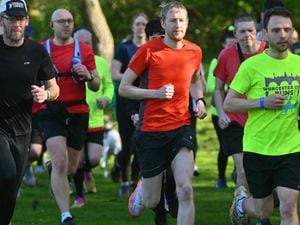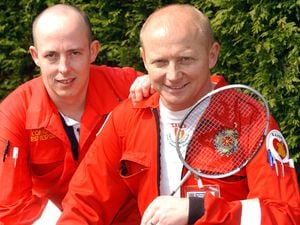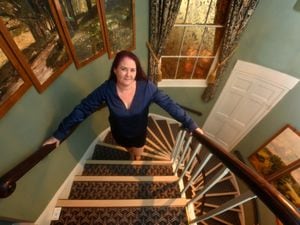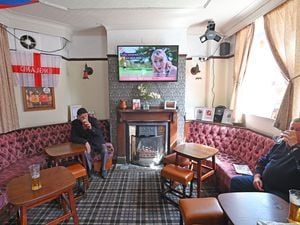I'm in it for the thrills: Roller coaster engineer speaks about highs and lows of the job
From taking tickets at a theme park as a teenager to roller coaster engineer, Mike Denninger reveals the thrills and spills of his 'cool' job.
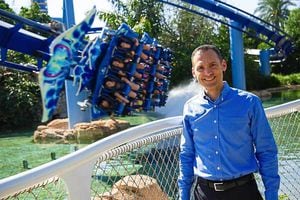
Mike Denninger has one of the coolest jobs in the world. Sure, it has its ups and downs, its highs and lows and twists and turns. But that's the very point – the 42-year-old is a roller coaster engineer for one of the biggest theme park companies in the entire world.
The New Yorker is based in the Sunshine State of Florida, the home of some of the greatest coasters on earth. Mike has had the pleasure of creating some of them himself, something that he told children about at the Big Bang Fair last weekend in Birmingham.
To celebrate National Science Week, the roller coaster expert headed to the NEC with a really important message – if he hadn't studied science, technology, engineering and mathematics (known collectively as STEM subjects) he wouldn't be travelling the globe to ride some of the coolest coasters imaginable.
We have to find out what that's like, and Mike is more than happy to share.
"There is a fair bit of excitement and thrill involved in my job," Mike admits. "Not just in what we produce but in what we get to work on. I'm the vice president of theme park development for Seaworld Parks and Entertainment."
That means Busch Gardens in Tampa, Florida, which is the home of Falcon's Fury, a ride which plummets 300 feet at 60 miles an hour. There's a floorless dive coaster (SheiKra), Montu which has seven intense inversions and Kumba, which gives the rider a full three seconds of absolute weightlessness during the dive loop. Our tummies are flipping over just thinking of it.
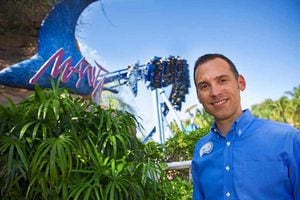
"I think my choices in academics led me to this point. I'm a mechanical engineer and I have a couple of degrees in mechanical engineering and I also have a business degree. I got involved in the theme park world very early – I was 16 when I started taking tickets at the front gate.
"Many of our long-term employees started out in the same way, in the park. It enables you to get your foot in the door."
Now his foot is firmly in, Mike is getting to create some amazing rides.
"When you work in this environment your passion for it just grows every day. You just want to keep doing things better and you always look for ways to do different things. I've been very fortunate for these opportunities to come my way."
Anyone that's been to a theme park of late will see how things have changed. Now it's not just big loop-the-loops that thrill us when we hop on board these days, and for Mike, the excitement runs much deeper than that.
"Technology in the theme park world and in roller coaster design has been critical, as with any field. It's not always the glamorous things – it's ways to be more efficient in design, construction, fabrication, safety systems and control systems. There's a big movement now with other technologies – virtual or alternate realities.
"We have this great coaster going into Busch Gardens called Cobra's Curse opening in the summer. That's going to be a thrill ride, that will appeal to families with kids. And this uses a new technology on the roller coaster train – you could classify it as a spinning coaster but it doesn't just spin.
"In one portion of the ride you're not spinning, you're facing forward. In another, the vehicle will be turned 180 degrees, so you're safely locked in going backwards. And for the last portion of the ride, as you drop off the second lift, you're in free spin. That technology did not exist so we teamed up with one of our ride vendor partners to come up with the concept.
"Now I mention that one because when you consider other rides, such as a new ride called Mako, it's really part of an overall realm enhancement. It focuses on sharks and why they're important in the world to us. Riders will get to board this 200-feet tall hypercoaster, it'll be the longest, tallest and fastest roller coaster in Orlando. It uses gravity which is very traditional. Rides can't get away from these very tried and true, proven means to provide excitement.
"Those are just two examples of coasters where you've got one using a totally new way of experiencing a ride and another with a tried and tested method."
But what stops Mike from just building the tallest coasters, with the most drops and endless loops?
"These days, the limitations are fewer and fewer, because roller coasters are going up and they're hundreds of feet tall. However, I've done a lot of work and research in roller coaster design. We've got our fair share of them across our parks, many of which have roller coasters that rank very highly in the world in various polls that are done.
"But it's not always about being the tallest in the world. There's really a sweet spot in coaster design, and it depends on the type that you're building. Mako for example is 200-feet tall.
"Had Mako been 300 or 400-feet tall, the size of the elements would be so huge that you'd have fewer of them if you wanted to deliver a ride of a similar length.
"What it comes down to is balancing the best experience that we can give our guests per project. And of course, funds are not infinite and we have many projects happening across the whole company, so everything comes down to balance.
"The 200-feet range on Mako is the perfect sweet spot. It will deliver ten or eleven moments of unique airtime. It's not always about being the tallest in the world."
We wonder how long it takes to come up with a new ride.
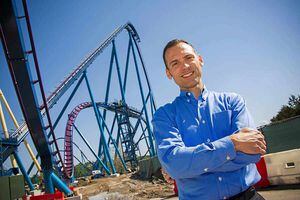
"It can take anywhere from three to five years from concept to completion. We're always looking ahead to what we're going to do next."
Is Mike's interest in riding the coasters too? Or does he just get enjoyment from sitting back and seeing all his hard work paying off?
"I'm a rider!" he says. "It's very important to be one if you're in a job like this. You have to understand what something feels like. There's not really a substitute for understanding it without experiencing it first hand, so I definitely don't pass up many opportunities to ride roller coasters!
"To stay current on what's in the industry and what people are doing with technologies it takes travel to be knowledgeable. You can't just focus on the country you work in, you always have to be open minded to see what's going on in different countries."
Talking of other countries, we have to finish by asking Mike why he's making the huge journey to Birmingham.
"You don't become a roller coaster engineer overnight, it takes a lot of hard work in the academics – particularly maths and science. For me, my personal path is along mechanical engineering. I felt that we could really contribute to the Big Bang Fair, and to the youth in the UK, to show them these really different career opportunities that they might not have considered otherwise. To get there requires a focus on the STEM subjects. I'm excited to be visiting!"

